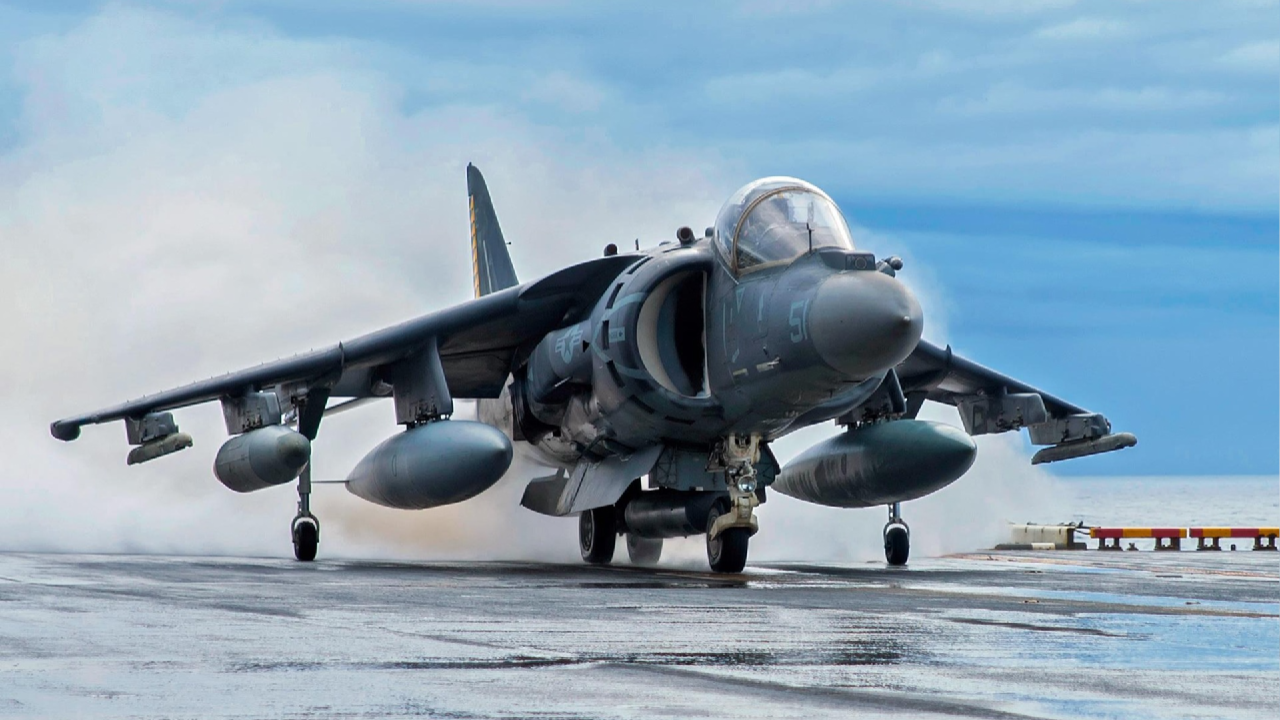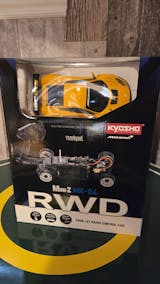The AV-8 Type Harriers, which include the AV-8A, AV-8B, and AV-8B Harrier II, have significantly impacted modern military operations, particularly in roles requiring vertical/short takeoff and landing (V/STOL) capabilities. Initially developed by Hawker Siddeley in the United Kingdom, the aircraft’s design was later adapted by McDonnell Douglas (now part of Boeing) to meet the specific needs of the U.S. Marine Corps.
Over time, the AV-8 family of aircraft evolved to incorporate cutting-edge technology, becoming a critical asset for amphibious warfare, close air support, and ground strike missions. The combination of vertical takeoff and landing ability with advanced combat systems made these aircraft essential for operations in confined spaces, such as aircraft carriers and amphibious assault ships.

The Birth of a New Class of Aircraft
The AV-8 Type Harriers trace their origins to the 1960s, a time when the military sought a flexible aircraft that could operate from smaller platforms, including ships and forward operating bases. The original Harrier, developed by Hawker Siddeley, was a breakthrough in aviation, proving that vertical takeoff and landing was possible for military jets.
This concept caught the attention of the United States, which led to the development of the AV-8A Harrier for the U.S. Marine Corps. This version was designed to operate in a variety of combat scenarios and was initially focused on providing support for ground operations and amphibious assaults.
As technology advanced, so did the AV-8 series. The AV-8A was succeeded by the more capable AV-8B and AV-8B Harrier II, which featured improved avionics, weapons systems, and enhanced flight performance. These updates ensured that the aircraft remained an essential part of the U.S. military’s arsenal for decades.

A Key Component of Amphibious Warfare
The AV-8 Type Harriers have proven indispensable in amphibious warfare, which often requires rapid deployment from sea to land. The aircraft’s unique ability to operate from small, mobile platforms, such as aircraft carriers and assault ships, enables it to perform a wide range of missions.
This includes close air support for ground forces, reconnaissance operations, and even anti-ship strikes. The ability to operate without needing long runways is a significant tactical advantage, especially in environments with limited infrastructure.
The AV-8B Harrier II stands out for its advanced targeting systems and radar capabilities, which allow it to engage threats with remarkable accuracy. This flexibility, combined with its V/STOL abilities, ensures that the AV-8 Type Harriers can adapt to various missions and perform effectively in complex environments.

Impact on Modern Combat Missions
The AV-8 Type Harriers have made important contributions in various conflicts. One of their most notable moments came during the Falklands War, where the Royal Navy's Sea Harriers played a key role in securing air superiority and providing close air support. Their ability to operate from ships and makeshift airstrips proved invaluable in the conflict.
Similarly, during Operation Desert Storm, the U.S. Marine Corps’ AV-8B Harriers conducted close air support missions and ground strikes, showcasing their ability to perform in challenging and dynamic combat situations.
The AV-8B Harrier II, in particular, benefitted from advanced avionics and weapon systems, allowing it to take on more complex tasks with ease, including precision strikes and multi-role operations.
Evolution Across Generations
The AV-8 Type Harriers evolved over time to meet the changing needs of modern warfare. Each version introduced critical enhancements that allowed these aircraft to stay relevant in an ever-changing battlefield.
AV-8A Harrier: The initial model, the AV-8A, introduced in the early 1970s, had a top speed of 665 mph and a range of 1,100 miles. It relied on the Rolls-Royce Pegasus 6-3 turbofan engine and was suitable for basic combat missions, but its avionics and weapon options were limited compared to its successors.

(United States Marine Corps AV-8A of VMA-231 in 1980, image: wikipedia)
AV-8B Harrier: Introduced in 1985, the AV-8B marked a significant leap in performance. Powered by the more powerful Rolls-Royce Pegasus 11-61 engine, this version featured digital avionics and a more advanced radar system, enhancing its capabilities in close air support and ground attack missions. The AV-8B had a top speed of 680 mph and a range of 1,350 miles.

AV-8B Harrier II: The AV-8B Harrier II, introduced in 1989, built upon the success of the AV-8B with the inclusion of advanced radar systems, laser-guided munitions, and a modernized cockpit. These features allowed for precision strikes and more complex missions, making the Harrier II a multi-role aircraft with greater combat effectiveness. The AV-8B Harrier II could reach a top speed of 735 mph and had a range of 1,350 miles.

Looking Ahead
As the AV-8 Type Harriers are gradually replaced by newer aircraft like the F-35B Lightning II, their role in shaping modern air combat remains undeniable. The introduction of V/STOL technology into military aircraft demonstrated that vertical takeoff and landing could play an integral role in amphibious operations, close air support, and multi-role combat missions. Boeing, having inherited McDonnell Douglas’ role in the development of the AV-8, continues to provide maintenance and logistical support for these aircraft.
In conclusion, the AV-8 Type Harriers were not only groundbreaking in terms of their unique design but also in their ability to adapt to the evolving needs of modern combat. Their V/STOL capabilities and multi-role flexibility have made them a critical part of military operations for decades, and their legacy continues to influence the development of future aircraft with similar capabilities.















